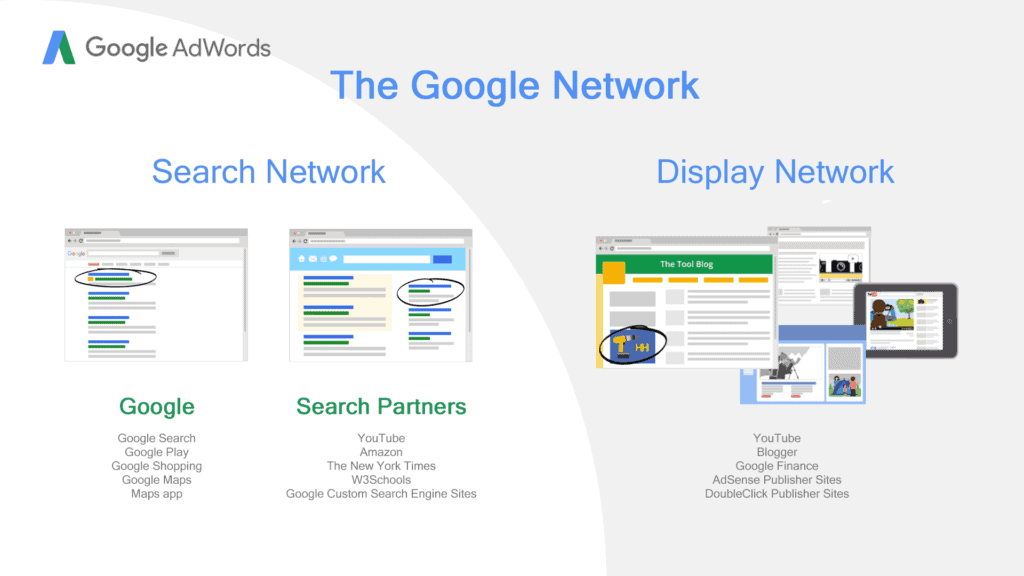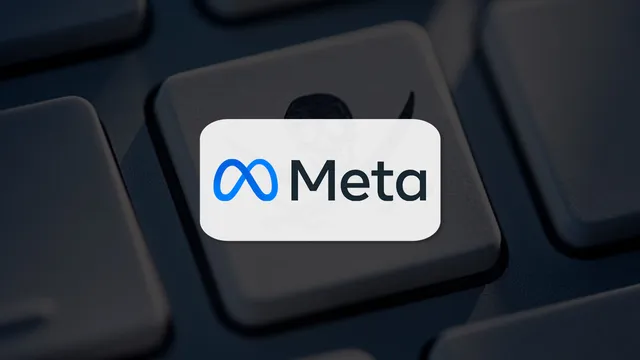
Google's Game-Changing Updates to Display Network Campaigns
Google, a pioneer in the digital advertising space, has once again made headlines with its latest announcement: significant updates to its Display Network campaigns. These updates are poised to revolutionize how advertisers reach their target audiences, offering more precision, flexibility, and effectiveness in their campaigns. In this article, we will delve into the details of these updates, explore their implications for advertisers, and provide insights on how to leverage these changes for optimal results.
Understanding Google Display Network (GDN)
Before diving into the updates, it’s essential to understand what the Google Display Network is and why it holds such a pivotal role in digital advertising.
What is Google Display Network?
Google Display Network (GDN) is a vast network of websites, apps, and videos where advertisers can display their ads. It reaches over 90% of internet users worldwide, making it one of the most extensive advertising platforms available. GDN allows advertisers to target specific audiences based on various criteria, including demographics, interests, and browsing behavior.
Why is GDN Important?
GDN is a powerful tool for brand awareness, retargeting, and driving conversions. Unlike search ads, which appear on search engine results pages, display ads are visual and can appear on a wide range of websites and apps. This visual nature makes GDN particularly effective for creating brand recognition and engaging users who may not be actively searching for a product or service.
The Latest Updates to Google Display Network Campaigns
Google has consistently updated its advertising platforms to keep up with the changing digital landscape. The latest updates to GDN campaigns are no exception, bringing several new features and enhancements designed to improve targeting, ad performance, and overall campaign management.
1. Enhanced Audience Targeting
One of the most significant updates to GDN is the enhancement of audience targeting capabilities. Google has introduced new audience segments and refined existing ones to help advertisers reach their desired audiences more effectively.
a. Custom Intent Audiences
Custom Intent Audiences allow advertisers to target users based on their recent search behavior. This means that if a user has been searching for specific products or services, advertisers can target them with relevant display ads. This update is particularly beneficial for retargeting campaigns, as it enables advertisers to reach users who have already shown interest in their offerings.
b. In-Market Audiences
In-Market Audiences have been expanded to include more categories and subcategories. These audiences consist of users who are actively researching or considering purchasing products or services within a specific category. By targeting these audiences, advertisers can reach potential customers who are closer to making a purchase decision.
c. Affinity Audiences
Affinity Audiences have also been updated to provide more granular targeting options. These audiences are based on users’ long-term interests and habits, allowing advertisers to reach users who are likely to be interested in their products or services based on their overall online behavior.
2. Responsive Display Ads
Google has introduced Responsive Display Ads, a new ad format that automatically adjusts its size, appearance, and format to fit available ad spaces. This update is designed to simplify the ad creation process and improve ad performance across different devices and platforms.
a. Dynamic Ad Creation
Responsive Display Ads use machine learning to dynamically create ads based on the assets provided by advertisers. This includes headlines, descriptions, images, and logos. The system then tests different combinations of these assets to determine which performs best in various contexts.
b. Improved Performance
By automatically optimizing ad creatives, Responsive Display Ads can deliver better performance compared to traditional static display ads. This is particularly beneficial for advertisers with limited resources, as it reduces the need for manual ad creation and testing.
3. Smart Bidding Strategies
Google has also updated its Smart Bidding strategies to provide more control and flexibility for advertisers. Smart Bidding uses machine learning to optimize bids in real-time, aiming to maximize conversions or conversion value.
a. Target CPA (Cost Per Acquisition)
Target CPA bidding has been enhanced to allow advertisers to set different CPA targets for different audience segments. This means that advertisers can allocate more budget to high-value audiences while maintaining control over their overall acquisition costs.
b. Target ROAS (Return on Ad Spend)
Target ROAS bidding has also been updated to provide more granular control over return on ad spend. Advertisers can now set different ROAS targets for different products or services, allowing for more precise budget allocation and optimization.
4. Cross-Device Reporting and Attribution
Understanding how users interact with ads across different devices is crucial for measuring campaign effectiveness. Google has introduced new cross-device reporting and attribution features to provide a more comprehensive view of user journeys.
a. Cross-Device Conversions
Cross-Device Conversions allow advertisers to track conversions that occur on different devices. For example, if a user clicks on a display ad on their mobile device but completes a purchase on their desktop, the conversion will be attributed to the original ad click.
b. Data-Driven Attribution
Data-Driven Attribution uses machine learning to analyze the entire conversion path and assign credit to each touchpoint. This provides a more accurate representation of how different ads and channels contribute to conversions, helping advertisers make more informed decisions about their campaign strategies.
5. Improved Ad Placement Controls
Ad placement is a critical factor in the success of display campaigns. Google has introduced new controls to help advertisers manage where their ads appear more effectively.
a. Exclusion Lists
Advertisers can now create exclusion lists to prevent their ads from appearing on specific websites, apps, or categories. This is particularly useful for avoiding low-quality or irrelevant placements that could negatively impact campaign performance.
b. Placement Performance Reports
Placement Performance Reports provide detailed insights into where ads are being shown and how they are performing. This allows advertisers to identify high-performing placements and optimize their campaigns accordingly.
6. Enhanced Creative Tools
Creating compelling ad creatives is essential for capturing users’ attention and driving engagement. Google has introduced new creative tools to help advertisers design more effective display ads.
a. HTML5 Ads
HTML5 Ads allow for more interactive and engaging ad experiences. These ads can include animations, videos, and other dynamic elements that can capture users’ attention and encourage interaction.
b. Video Creation Tools
For advertisers looking to incorporate video into their display campaigns, Google has introduced new video creation tools. These tools make it easier to create high-quality video ads that can be used across GDN and other Google advertising platforms.
7. Integration with Google Analytics
Google has strengthened the integration between GDN and Google Analytics, providing advertisers with more comprehensive insights into their campaign performance.
a. Audience Insights
Audience Insights in Google Analytics allows advertisers to gain a deeper understanding of their target audiences. This includes demographic information, interests, and behavior, which can be used to refine targeting strategies.
b. Conversion Tracking
Enhanced conversion tracking capabilities enable advertisers to measure the impact of their display campaigns more accurately. This includes tracking conversions across different devices and attributing them to the appropriate ads and channels.
Implications for Advertisers
The updates to Google Display Network campaigns have several implications for advertisers, both positive and challenging. Understanding these implications is crucial for making the most of the new features and enhancements.
1. Increased Targeting Precision
The enhanced audience targeting capabilities allow advertisers to reach their desired audiences with greater precision. This means that ads are more likely to be shown to users who are genuinely interested in the products or services being offered, leading to higher engagement and conversion rates.
2. Simplified Ad Creation
The introduction of Responsive Display Ads and new creative tools simplifies the ad creation process. Advertisers can now create more effective ads with less effort, allowing them to focus on other aspects of their campaigns.
3. Improved Campaign Performance
The combination of Smart Bidding strategies, cross-device reporting, and enhanced creative tools is expected to improve overall campaign performance. Advertisers can expect higher conversion rates, better return on ad spend, and more accurate attribution of conversions.
4. Greater Control Over Ad Placements
The new ad placement controls give advertisers more control over where their ads appear. This helps to ensure that ads are shown in relevant and high-quality contexts, reducing the risk of wasted ad spend.
5. Enhanced Insights and Reporting
The integration with Google Analytics and the new reporting features provide advertisers with more comprehensive insights into their campaign performance. This allows for more informed decision-making and better optimization of campaigns.
6. Challenges in Adaptation
While the updates bring many benefits, they also present challenges for advertisers. The increased complexity of targeting options, bidding strategies, and ad formats may require a steeper learning curve. Advertisers will need to invest time in understanding the new features and how to use them effectively.
How to Leverage the Updates for Optimal Results
To make the most of the updates to Google Display Network campaigns, advertisers should consider the following strategies:
1. Invest in Audience Research
With the enhanced audience targeting capabilities, it’s more important than ever to invest in audience research. Understanding the demographics, interests, and behaviors of your target audience will help you create more effective campaigns and reach the right users.
2. Experiment with Responsive Display Ads
Responsive Display Ads offer a simplified and effective way to create display ads. Experiment with different combinations of headlines, descriptions, images, and logos to see what works best for your audience.
3. Utilize Smart Bidding Strategies
Take advantage of the updated Smart Bidding strategies to optimize your bids in real-time. Set different CPA and ROAS targets for different audience segments to maximize your return on ad spend.
4. Monitor Ad Placements Closely
Use the new ad placement controls to ensure that your ads are shown in relevant and high-quality contexts. Regularly review Placement Performance Reports to identify and exclude low-performing placements.
5. Leverage Creative Tools
Make use of the new creative tools to design more engaging and interactive ads. Consider incorporating HTML5 and video ads into your campaigns to capture users’ attention and drive higher engagement.
6. Integrate with Google Analytics
Strengthen the integration between your GDN campaigns and Google Analytics to gain deeper insights into your audience and campaign performance. Use Audience Insights and enhanced conversion tracking to refine your targeting and optimization strategies.
7. Stay Updated and Adapt
The digital advertising landscape is constantly evolving, and staying updated with the latest trends and features is crucial. Regularly review Google’s updates and best practices, and be prepared to adapt your strategies accordingly.
Conclusion
Google’s latest updates to Display Network campaigns represent a significant step forward in the world of digital advertising. With enhanced audience targeting, responsive display ads, smart bidding strategies, and improved ad placement controls, advertisers have more tools at their disposal to create effective and efficient campaigns. However, with these new features comes the need for a deeper understanding and more strategic approach to campaign management.
By investing in audience research, experimenting with new ad formats, utilizing smart bidding strategies, and leveraging creative tools, advertisers can make the most of these updates and achieve optimal results. As the digital advertising landscape continues to evolve, staying informed and adaptable will be key to staying ahead of the competition and maximizing the potential of Google Display Network campaigns.
The updates to Google Display Network campaigns offer exciting opportunities for advertisers to reach their target audiences more effectively and drive better results. By embracing these changes and implementing the strategies outlined in this article, advertisers can position themselves for success in the dynamic world of digital advertising.


